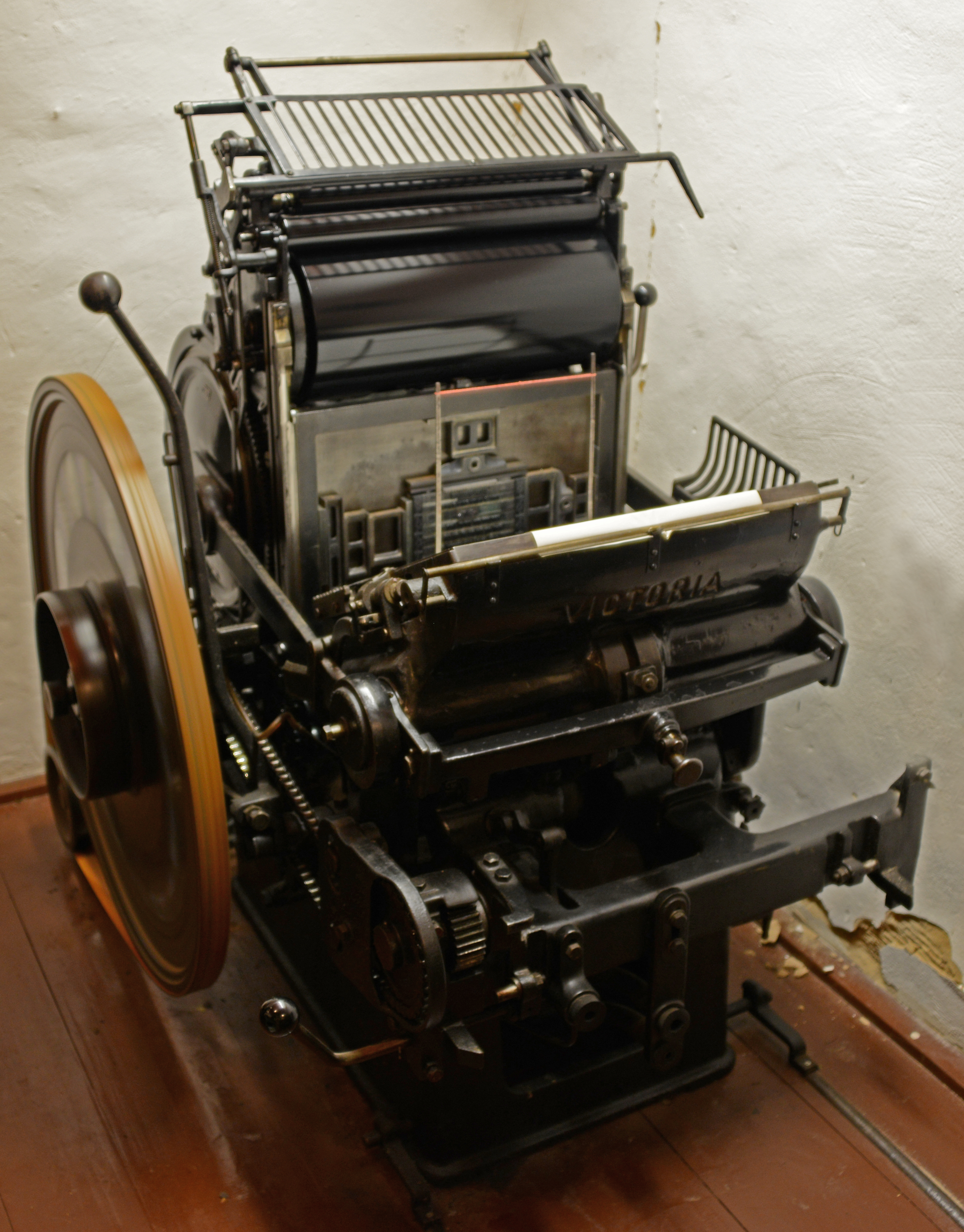Jobbing Press on:
[Wikipedia]
[Google]
[Amazon]

 A jobbing press, job press, or jobber is a variety of
A jobbing press, job press, or jobber is a variety of

 A jobbing press, job press, or jobber is a variety of
A jobbing press, job press, or jobber is a variety of printing press
A printing press is a mechanical device for applying pressure to an inked surface resting upon a print medium (such as paper or cloth), thereby transferring the ink. It marked a dramatic improvement on earlier printing methods in which the ...
used in letterpress printing
Letterpress printing is a technique of relief printing. Using a printing press, the process allows many copies to be produced by repeated direct impression of an inked, raised surface against sheets or a continuous roll of paper. A worker com ...
.
The press is meant to be operated by a pressman working on small jobs, as opposed to long print runs or newspaper work, or jobs that require less than a full-sized sheet of paper, though the definition of "small jobs" may vary widely depending on the printing shop. Such work might include printing personal stationery, handbills, or other small printing jobs, or may include even a small book. Such presses were common in the later 19th and 20th centuries, have yet been largely replaced by the photocopier
A photocopier (also called copier or copy machine, and formerly Xerox machine, the generic trademark) is a machine that makes copies of documents and other visual images onto paper or plastic film quickly and cheaply. Most modern photocopiers ...
for small and medium runs, and by the desktop computer for personal stationery. Today, the jobber is the preferred press for letterpress
Letterpress printing is a technique of relief printing. Using a printing press, the process allows many copies to be produced by repeated direct impression of an inked, raised surface against sheets or a continuous roll of paper. A worker com ...
printers who now produce high-end prints (often wedding invitations) for customers who want an antique effect.
Though the term can refer to any small printing press or machine intended for such work, it most commonly refers to a class of small, vertical platen
A platen (or platten) is a flat platform with a variety of roles in printing or manufacturing. It can be a flat metal (or earlier, wooden) plate pressed against a medium (such as paper) to cause an impression in letterpress printing. Platen m ...
presses.
Depending on the time period when the machine was made, they may be operated by treadle
A treadle (from oe, tredan, "to tread") is a mechanism operated with a pedal for converting reciprocating motion into rotating motion. Along with cranks, treadmills, and treadwheels, treadles allow human and animal machine power in the absen ...
, line shaft
A line shaft is a power-driven rotating shaft for power transmission that was used extensively from the Industrial Revolution until the early 20th century. Prior to the widespread use of electric motors small enough to be connected directly to e ...
, electricity, or by hand lever.
Platen job press
The most common form of job presses were those classified as platen presses. A platen press is one that has aplaten
A platen (or platten) is a flat platform with a variety of roles in printing or manufacturing. It can be a flat metal (or earlier, wooden) plate pressed against a medium (such as paper) to cause an impression in letterpress printing. Platen m ...
(a flat metal plate) to apply the needed pressure against the paper and bed of type to form the impression, in contrast to those presses that use a cylinder.
George Phineas Gordon developed a design of press that was widely adopted, his "Franklin Press". Chandler & Price
Chandler & Price was founded in 1881 in Cleveland, Ohio, by Harrison T. Chandler and William H. Price. They manufactured machinery for printers including a series of hand-fed platen jobbing presses, as well as an automatic feeder for these pres ...
was a company that made a widely used jobber press.
See also
* Adana Printing Machines * Golding PearlReferences
Printing devices Letterpress printing {{Journalism-stub